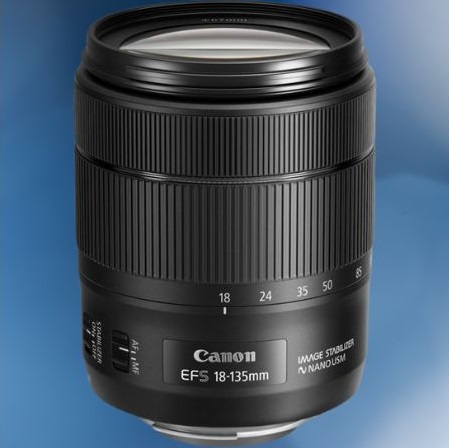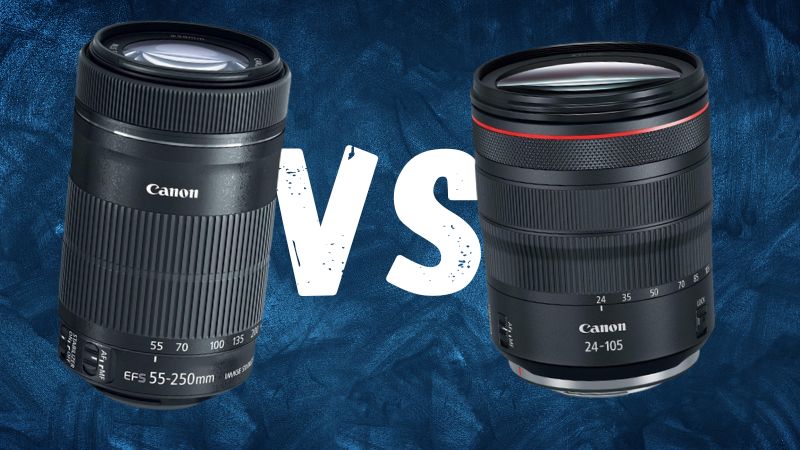Canon lenses use many kinds of autofocus systems, the most popular of which are STM (stepping motor) and USM (ultrasonic motor). They can work with both Canon mirrorless and DSLR cameras. You must understand the difference between STM vs USM lens and their uses before you buy a new lens for your Canon camera. In this article, we explain everything you need to know about these lenses to make an informed and right decision.
Before we delve into details, USM or ultrasonic lenses are best for photography, especially when you require speedy autofocus. STM or stepping motor lenses are ideal for videos but you have to compromise on speed.
History of Canon Autofocus Systems
Canon was the first ever lens manufacturer to install the autofocus system in the lens. The first lens with truly successful and reliable autofocus came out in 1985. Other companies such as Yashica, Pentax, and Nikon followed suit and introduced their own autofocus systems. Most of them resembled closely the “screwdriver” autofocus of the Canon. Still, Canon remained the industry leader when it comes to lenses with built-in autofocus systems.
The next 3 decades proved the worth of Canon’s system. Other companies had no option but to copy or at least mold their autofocus systems to match that of Canon.
In 1987, Canon introduced the Electro-Optical System (EOS) which incorporated two different autofocus systems. These include novel piezoelectric motors and standard permanent magnet DC motors. The DC motors had a gear belt that wrapped around the mirror or optical system of the lens. The piezoelectric motor does not have a gearbox because of its ability to provide high torque at slow speeds.
Modern Autofocus Systems
Currently, Canon lenses come with three major types of autofocus systems. These are traditional DC motors as well as USM and STM autofocus. Let us see how these systems differ from each other.
Direct Drive or DC Motors
A lens uses a Direct Drive or DC autofocus if its name does not include either “STM” or “USM” terminologies. It is a handy autofocus system but does not offer the benefits of a USM or STM lens such as speed, accuracy, or silence while shooting.
USM Lenses

Canon first launched USM or ultrasonic autofocus for its lenses back in the ’90s. It is the most popular type of autofocus motor for Canon EF lenses. All USM lenses move the lens using the gyratory force generated by the conversion of ultrasonic vibrations. They work on the principle that one of the two loosely coupled rings will move the other if a certain frequency of vibrations is applied to it. One of these rings is placed on the autofocus groups to drive it directly. The other one is placed on the lens body.
USM lenses are the fastest of all Canon lenses. Still, you don’t need to switch off the autofocus to manually tweak the focusing.
USM lenses have further three types.
Ring Type USM Motors
This is the most widely used autofocus moto in the Canon EF lenses. More than 40 lenses using USM motors feature a ring-type motor. Some of its salient features are as below.
It can decrease the speed without a gear system because of its immense power and can easily drive the focus group quickly at low speeds.
It can hold a focus group in place even after you switch off the motor without any assistance.
It delivers the best focus response by starting and stopping in no time.
Nano USM Lenses
Nano USM is the newest type of USM lens, only introduced in 2016. They cannot only rival ring-type motors in terms of speed but also can work seamlessly and quietly just like STM lenses. They are an ideal option, both for stills and videos, especially if you are an amateur photographer.
They combine the silence and smoothness of STM lenses with the speed of a Ring-Type USM motor. These features make them a perfect choice for shooting movies where you require quiet and smooth autofocus. Similarly, they are best for capturing fast action as well.
Another nice feature is the superb control when you move towards or away from the subject. It ensures smooth tracking regardless of your distance from the subject.
Micro USM Motors
Micro USM motors are smaller motors to fit into any lens irrespective of its size. They are also cheaper compared to Ring-Type and Nano motors, making them affordable for an average user with a limited budget.
Micromotors have a more traditional autofocus approach. They use a series of gears instead of directly coupling an ultrasonic vibration motor with the autofocus group. The motor itself works quietly but the gears produce a lot of noise just like regular DC motors.
Micromotors are also lightweight and easy to carry. You can take them with you wherever you want without any hassle.
What are Canon STM Lenses?

STM means stepping motor and it rotates the focus ring using a gear system. One of the hallmarks of the Canon STM lens is silence. The autofocus system is extremely quiet, making it a great option for videos. However, it is not as fast as a USM lens.
Canon designed STM motors, especially for videos but they also capture brilliant stills in most conditions. They ensure smooth and quiet focusing and therefore, they are a better fit for videos. They allow you to shoot more naturally, without any external noise or sounds.
These motors are not only suitable for shooting videos but also for every situation with smooth incremental movements such as contrast-detect autofocus.
The major drawback is that they do not offer a tactile feeling of USM motors. You cannot move the focus ring physically because it is not attached to any mechanical mechanism. Instead, the focus ring electronically sends a signal to the motor to adjust the focus position.
STM motors also have two types.
Gear Type STM Motor
Gear Type motors are compact and lightweight motors. They drive focus using helical gears and are ideal for compact and small STM lenses.
Lead-Screw Type STM Motor
This kind of motor is normally used in bigger and heavier STM lenses. It is seven times faster and silent than a regular Gear Type STM.
STM vs USM Lens: Which is better for Photography?
Finally, we are providing you with a short overview of the key differences between STM vs USM lenses and which one is better for photography.
Speed
Speed is the first consideration in STM vs USM lens debate. USM lenses offer faster autofocus compared to STM lenses. You should buy a USM lens if you want to capture fast action or simply require faster autofocus. USM lenses are better equipped to quickly switch focus between two subjects as well. Most professional photographers use USM lenses for wildlife photography for the same reason.
Noise Factor
When it comes to noise, STM lenses are way quieter and smoother than USM lenses. USM lens incorporates a lot of elements and their movement produces quite a bit of noise. STM lenses only create minimal noise and are, therefore, widely used for videos and filmmaking. Canon makes these lenses specifically for videos. But – they also take excellent photos on most occasions.
For Photography
USM lenses are perfect for stills and photography. The fast autofocus speed alone should convince you to invest in these lenses if you want to capture beautiful stills. Similarly, most USM lenses use superior quality glass as they belong to the Canon L-Series of lenses. Therefore, they offer outstanding image quality.
You should also go for one of these lenses if you are a bird photographer, wildlife photographer, sports, photographer, or action photographer.
For Videos
USM lenses are quite noisy and thus, not suitable for videos. The camera’s microphone can pick up the noise generated by the USM lens. As a result, the video will have poor audio quality. You can use an external microphone to cancel the lens noise. However, you must keep the microphone at a fair distance from the lens.
The better alternative is to use quieter STM lenses for videos. They do not make any noise while focusing and therefore, your camera will not pick up any noise as well. The audio quality will be perfect and the videos will be smooth.
Manual Focus
Comparing Canon STM vs USM lens, we must mention that STM lenses have a drag during manual focusing because of their focusing system. Some STM lenses don’t have a manual focusing option at all.
USM lenses, on the other hand, do not suffer from drags during manual focusing. They have a full-time manual focus which you can use even if you switch off the autofocus.
Price
Price is the biggest consideration when choosing a lens. As a rule of thumb, STM lenses are cheaper than USM lenses. Therefore, you should buy an STM lens if you have a tight budget.
Also Read: What Are Prime Lenses Best for? Let Us Find Out
Frequently Asked Questions
Which is better STM or USM lens?
Choosing between STM (Stepping Motor) and USM (Ultrasonic Motor) lenses largely depends on your needs. USM lenses are known for their speed and are ideal for fast-action photography, while STM lenses are quieter and smoother, making them better for video recording.
What is STM lens used for?
STM lenses are designed for smooth and silent autofocus, making them particularly useful for video recording where autofocus noise can be intrusive. They’re also great for photography where silence is crucial, like in wildlife photography.
What is a USM lens used for?
USM lenses excel in providing fast and precise autofocus, making them suitable for sports, wildlife, and any situation where subjects move quickly. Their speed ensures you don’t miss critical moments, though they can be louder than STM lenses.
Is STM worth it?
Whether STM is worth it depends on your specific needs. If you prioritize video recording or need a quieter lens for certain photography scenarios, STM lenses are a valuable investment. However, if your focus is on capturing fast-moving subjects, a USM lens might be more beneficial.
Final Thoughts
Now, you know the difference between STM vs USM lens. Both types of lenses have their advantages and disadvantages. Which type of lens is best for you depends on your budget and requirements. You must buy an STM lens if you are a professional videographer or a USM lens if you want to capture professional stills.

